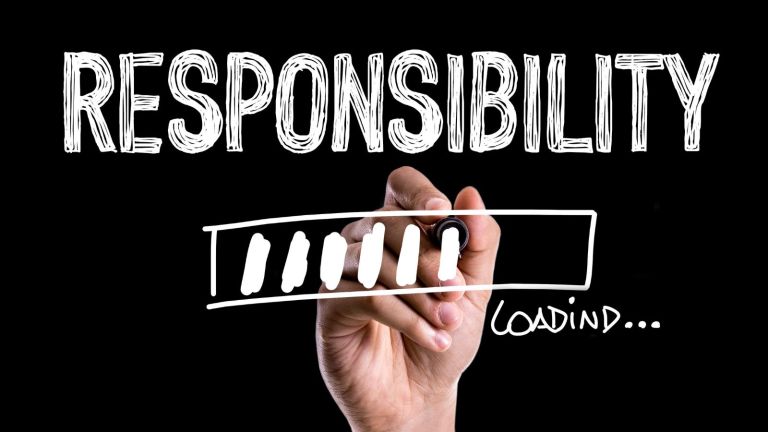Likes and Retweets Are Endorsements on Social Media
You know that disclaimer on social media, Likes and Retweets Are Not Endorsements?
“Likes and Retweets are endorsements”: It doesn’t really mean anything. By that I mean that likes and retweets are endorsements, and today I’m gonna talk about why.
This particular disclaimer is typically seen on Twitter. It’s generally found in your Twitter bio or maybe in a pinned tweet. But, it’s taking up valuable space you need to share your message. And, like I said, it doesn’t mean as much as you might think.
In this article learn
- What are likes and retweets?
- How what you share on social media is your responsibility
- It’s time to ditch the disclaimer
Hi there, I’m Jennifer van Alstyne of The Academic Designer LLC. This is my blog where I share advice on communicating your work with the world through social media and websites. And I interview awesome grad students, faculty and researchers like you for The Social Academic interview series.
Today we’re talking about sharing on social media. And we’re getting into the specifics of why disclaimers like this aren’t necessary:
“Likes and RT’s are not endorsements“
“Likes/RTs ≠ endorsements“
“Retweets do not equal endorsements“
Have you seen a statement like this before? I’ve seen it on hundreds of profiles. And I’ve been in workshops where this type of disclaimer is recommended for grad students and faculty, especially on the job market.
According to Buzzfeed, the phrase was started by Patrick LaForge, and was something he borrowed from the New York Times social media policy where he was an editor. Now, he says the phrase “makes me cringe.”
Let’s get into why I don’t recommend this disclaimer.
Subscribe to The Social Academic blog.
The form above subscribes you to new posts published on The Social Academic blog.
Want emails from Jennifer about building your online presence? Subscribe to her email list.
Looking for the podcast? Subscribe on Spotify.
Prefer to watch videos? Subscribe on YouTube.
What are likes and retweets? Let’s talk about the effects of sharing on social media

Likes and retweets are forms of engagement on social media. Likes are applicable to most social media platforms. Whereas retweets are specific to Twitter.
However, some form of sharing is available on most networks. And retweets are a type of sharing. Today we’re talking about social media networks in which the engagements, like and retweet, share that content with your audience. This includes networks like
And we’re going to talk about why sharing is a form of endorsement.
First, let’s talk about liking and sharing on social media. A like usually means you’ve read a post, and liked the content of it. On some platforms, liking a post is kept private. Or, it’s relegated to an area few people check (like on Instagram). That’s not the case however, for Twitter and LinkedIn.
When you engage on Twitter and LinkedIn, it’s public. When you like a post or tweet on those platforms, the original post is shared with your audience along with a little note at the top that you’re the one who liked it.
You do need to be aware that even the act of liking an article is in fact sharing it with your audience. And that’s broadcasting. I mean we’re talking about transmitting information, sharing it with real people. That’s actively sharing information and putting our name behind it.
Sure, it’s not for long. But there’s a reason so much disinformation spread on Facebook and Twitter during the last US election cycle. And some of that is down to us. We need to be cognizant of what our actions do. In this case, sharing content with a larger audience: mainly your own.
The same is true for retweeting and sharing content. Though the retweet is particular to Twitter, you are literally sharing content with your audience when you do retweet.
This is a great thing, but it also means you are in a sense endorsing that content: you’re sharing it with your personal audience and putting your name behind it as content you’ve shared.
You don’t need that disclaimer. The act of liking or sharing something is kind of endorsing it. Yeah, not officially. Not politically.
Your ‘endorsement’ is more likely to have your friends, family, colleagues engaging with that information. It invites them to explore that content.
In real time.
Like right now.
So yeah…I don’t recommend that disclaimer. It’s not needed. And it’s taking up valuable room in your bio (or pinned tweet). Instead, be cognizant of what you like and share.
Check out the article first. View that person’s profile to see what they typically share. See if it’s something your social media audience will be interested in.
A few extra steps makes a big difference for the community you cultivate online.
P.S. I do want to mention that while there hasn’t been an official ruling on if retweets are endorsements legally in the United States, the Justice Department does assume “that at least some retweets can be read as endorsements,” according to the Harvard Journal of Law and Technology (JOLT).
And in some countries including the United Kingdom, Switzerland, India, and Japan, Twitter users have been held liable for tweeting false or defamatory content.
So think before you retweet. But definitely don’t rely on a disclaimer to protect you. It likely won’t.
What you share on social media is your responsibility

It’s your responsibility to be aware of what you’re sharing. That often means reading the article, or visiting someone’s profile to see what they’re about first.
This is a step not everyone takes.
We’re used to checking our sources for articles, and being questioned about our citations by Reviewer #2. That peer review process is formalized, and the steps are clear.
But when it comes to social media, when you like or retweet something on Twitter, it’s shared with your audience in real time.
I mean no one is going to go back to your bio to see if you have that disclaimer or not. They’re going to click on the link or Twitter thread and explore the content you’ve shared.
Because you have that power, to share a message and have it be
- seen
- read
- shared
- commented upon
especially in real time, you need to take extra steps to ensure you stand by that content.
Or if you don’t, that you qualify your opinion or why you’re sharing it with a comment of your own.
But another reason I wanted to write about this is because oftentimes people fall into typical patterns of engagement (liking and retweeting posts).
This feels comfortable, because we’re not creating content (and for some this means not feeling judged). It becomes easy to like a few posts, find something to retweet, and move on.
I’m not saying we all have to be content creators on social media, but I do encourage you to post original text, photos, or video once in a while.
And a good way to practice or start doing that is by changing from retweet to retweet with a comment. That means, when you share you’re providing 1-2 sentences of your own insight. Here are some ideas:
- a quick reiteration of what people find in the tweet
- a relevant hashtag and quick note to check it out
- why you liked it and are sharing it
- why you don’t like or agree with it
- a quote from the article
So, retweeting is sharing content with your audience. And that can be a good thing, especially when it’s relevant to their interests (and what you want to talk about).
But, retweeting with a comment is more personable, and more effective for your social media channels overall.
It’s also a great way to start writing your own original posts, for those of you social media lurkers out there.
Before we move on, and you throw up your hands and say there are far too many things you’ve liked or retweeted. You’re anxious you’ve shared something you shouldn’t. Or liked the wrong post.
I’ve been there. And I’ve worked with many faculty and researchers who’ve gone through the same thing.
Last year I interviewed Lauren Smart, who has one solution, “I actually recently installed Delete Tweet on my Twitter. So every, every, um, 300 tweets I think is…All of my old tweets will get deleted and only the most recent tweets are there.”
There are a few of programs and apps you can use to delete tweets in bulk.
But you can also take back your likes and retweets manually by scrolling through your feed. This tends to be my recommendation. And people often need to delete less than they expect.
Subscribe to The Social Academic blog.
The form above subscribes you to new posts published on The Social Academic blog.
Want emails from Jennifer about building your online presence? Subscribe to her email list.
Looking for the podcast? Subscribe on Spotify.
Prefer to watch videos? Subscribe on YouTube.
So it’s time to ditch the disclaimer and update your Twitter bio

You’re probably like, okay I get it. No disclaimer. But what do I put in my bio instead?
Your Twitter bio is a great place to share who you are and what you do. And because there’s a limited number of characters allowed there, don’t bog it up with the disclaimer.
Give people more information about who you are and why they should follow you. Here are some things you can include:
- your university or affiliation
- your area of research and topic of specialization
- the book project you’re working on
- interests and topics you talk about on Twitter
- 1 relevant hashtag to help people find you
I encourage you to get creative. Oh, and avoid acronyms. Twitter search is quite powerful, but people typically search for full keywords, not acronyms. So be sure to use full words.
Learn more about social media for academics. Start my social media course!
Guides and Advice Articles Resources for Grad Students Social Media How To's Twitter
Jennifer van Alstyne View All →
Jennifer van Alstyne is a Peruvian-American poet and communications consultant. She founded The Academic Designer LLC to help professors build a strong online presence for their research, teaching, and leadership. Jennifer’s goal is to help people feel confident sharing their work with the world.
Jennifer’s personal website
https://jennifervanalstyne
The Academic Designer LLC
https://theacademicdesigner.com


1 Comment Leave a comment ›